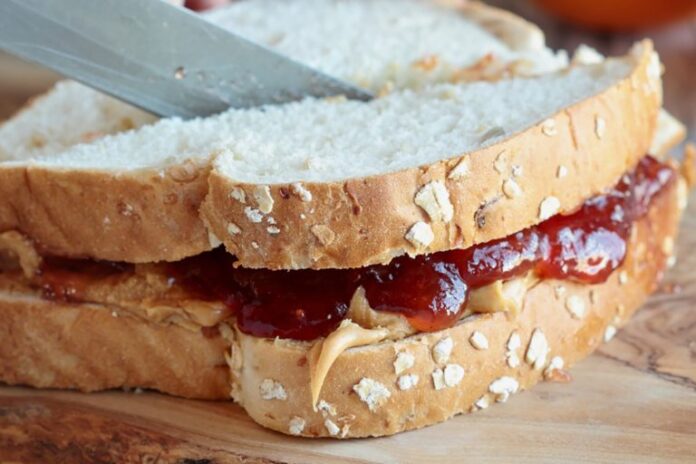Simple carbs, or bad, are comfort foods that we crave, such as white bread, pasta, white pizza, white bread, and other sugary treats. Good carbs can be good for your mood, health, and waistline.
What are “bad” carbs: Simple, refined, or “bad”?
Simple carbohydrates are sugars and refined grains that lack bran, fiber and nutrients. These include white bread, pastries and white flour. They are easy to digest and can cause unhealthy spikes of blood sugar. They can cause mood swings and energy fluctuations, as well as fat buildup around the waistline.
Refined or simple carbs can flood your bloodstream with sugar, which causes a surge in insulin to remove the sugar from your body. This insulin can make you feel hungry quickly after eating, and often lead to a craving for more sugary carbs. Overeating and weight gain can result in insulin resistance and type-2 diabetics. Refined carbohydrate and sugar intake has been linked to high bloodpressure , heart disease , obesity, hyperactivity and mood disorders as well as suicide among teenagers.
Why is it so hard to cut down on sugar and other refined carbs?
Many people find it difficult to cut back on sugary treats or overcome their carb cravings. Sugar is not only found in sugary snacks, desserts and candies but also in many processed foods we consume, such as sodas, coffee, fruit drinks, bread, pasta sauce and frozen meals. However, avoiding diet saboteurs doesn’t mean you won’t feel satisfied or that comfort food will be gone forever. It is important to choose the right carbs. Complex, unrefined or “good” carbohydrates such as vegetables, whole grain, and naturally sweet fruits digest slower, which results in stable blood sugar levels and lower fat accumulation.
Focusing on whole foods and complex unrefined carbohydrates can help you reduce sugar intake and maintain a healthy weight . You can still satisfy your sweet tooth by focusing on complex and unrefined carbs. You will feel more energetic and healthier, as well as losing stubborn belly fat that many people struggle with.
Good carbs vs. poor carbs
Carbohydrates are the main source of energy for your body. According to the U.S. Department of Health and Human Services, 45 to 65 percent of your daily calories should be from carbohydrates. The majority of your daily calories should come from complex, unrefined carbohydrates, and not starches like potatoes or corn.
Complex carbohydrates, unlike simple carbs, are slowly digested, which causes a gradual increase in blood sugar. Complex carbohydrates are rich in nutrients and fiber. This can prevent serious diseases, help with weight loss, and increase your energy levels. The “good” carbs have a lower glycemic load, which can help prevent type 2 diabetes and other cardiovascular problems.
These are good carbs:
Unrefined whole grain Whole wheat bread, multigrain breads, brown rice, barley and quinoa are all examples of whole grains .
Other starchy vegetables – celery, spinach, Brussels sprouts and Brussels sprouts.
Legumes: kidney beans, baked beans and peas.
Nuts Peanuts, cashews and walnuts
Fruit – apples, berries, citrus fruit, bananas, pears.
Sugar added to your diet is empty calories
All the sugar your body needs is found in foods, such as fructose and milk sugars. Sugar added to processed foods has no nutritional value. It is a lot of empty calories which can lead to weight gain and other health issues.
It’s impossible to completely eliminate sugar and empty calories from your daily diet. American Heart Association recommends that you limit the amount of added sugars in your diet to 100 calories per day, which is approximately 6 teaspoons or 24g sugar for women and 150 calories for men (9 teaspoons or 36g sugar for men). It’s important to remember that 12-ounce sodas can contain up to 10 teaspoons added sugar. Some shakes and sweetened coffee beverages have even more.
American adults consume 19.5 teaspoons (82g) of sugar daily, sometimes without realizing. You can reduce the amount of sugar in your diet and have a dramatic impact on how you feel, look and think.
How to find hidden sugar in food
Smart choices about sweets are only one part of the battle to reduce sugar and other simple carbs. Sugar can also be found in packaged foods, fast food, and staples like bread, cereals and canned goods. It is important to identify hidden sugar in food labels. This can require some detective work.
- Manufacturers list the total sugar content on the labels, but they don’t have to distinguish between sugar added and sugar found naturally in the food.
- Although added sugars are listed in ingredients, they are not always easy to identify. Sugar, honey, and molasses are easily identifiable, but added sugars can also be listed in the ingredients as evaporated cane juice or high-fructose Corn Syrup, corn sweetener or cane nectar, agave syrup, agave crystals, invert syrup, or any other fructose or dextrose, lactose or maltose.
- Sugary foods would normally have sugar at the top of the ingredient list. However, manufacturers may add different sugars to the list. All these small amounts of sweeteners can add up and lead to lots of sugary extras.















